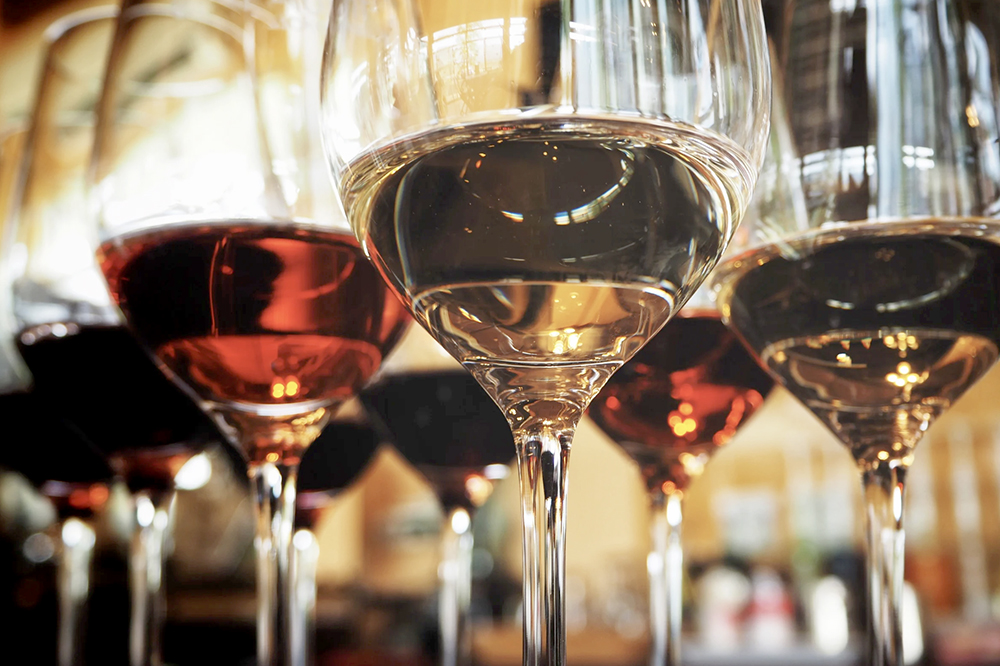Drink Up!
By David Setley
My goal has always been to broaden the wine knowledge of my readers and customers by introducing wines from around the world. You may have even heard me refer to a wine as being “Old World” or “New World.” It’s a distinction that warrants further discussion.
Old World wines are those produced in countries where winemaking was initially born and raised. Archaeologists determined that the earliest evidence of winemaking occurred over 9,000 years ago in the Transcaucasia area of the Middle East, near the Caucasus Mountain range. This is roughly in the modern-day country of Georgia, near the Black Sea. The Phoenicians became the first people to actively trade wine to countries throughout the Mediterranean Sea from their home area of what is now Lebanon, Israel, and Syria. The Greeks then became the dominant wine merchants of the world, until the rise of the Roman Empire when Italy, France, Spain, Portugal, Germany, Austria, and others began making wine. All of these Western European countries, in addition to Hungary, Croatia, England, and others are considered the “Old World” in wine terms. By default, all other winemaking countries, including the United States, Argentina, Chile, South Africa, Australia, and New Zealand, are considered “New World.”
Geography is certainly interesting, but what does it mean to you or me as we shop for a bottle of wine? You may recall prior articles about terroir. Terroir explains how the soil, climate, terrain, and winemaking traditions of various geographic locations are reflected in the wine in your glass. Each country, each region of that country, and each subregion within that region have a unique terroir. Think about Southern New Jersey, for instance. Local weatherman Nick Pittman uses the phrase “Cape May Bubble” to describe why Mays Landing may experience morning temperatures that are 10 degrees cooler and afternoon temperatures that are 10 degrees warmer than Ocean City, even though the two are merely 15 miles apart. Why? Location, location, location! In wine, climate, differences in soil composition, proximity to large masses of water, and elevation can make significant differences to wine grapes as they grow and mature.
Now let’s talk about three significant taste differences between Old World and New World wines. First, Old World wines tend to be lighter-bodied. Keep in mind that the winemaking traditions of a country or region are part of terroir. In Old World countries, such as France, winemaking traditions have evolved over a millennium. One such tradition is to produce wines with lower alcohol content and tannins. In New World countries, like the United States, most traditions have only evolved over a couple of centuries. New World consumers largely desired bold, fuller-bodied wines with more tannins and higher alcohol. Let’s take Pinot Noir as an example. The Thevenet & Fils Macon Pierreclos Pinot Noir from the Bourgogne (Burgundy) region of France and the Montinore Estate Pinot Noir from the Willamette Valley of Oregon are both excellent wines of the same varietal. If you pour a glass of each and observe them side-by-side, however, you will notice that the color of the French wine is lighter and the aroma is less intense. The wine legs on the Montinore are more pronounced, indicating more body and higher alcohol. Indeed, the alcohol of the French wine is 13% vs. 13.3% for the Oregon wine. It may not seem significant, but it is certainly noticeable.
The second significant difference between Old and New World wine is that New World wines tend to be more fruit-forward. Almost all wines have a fruit component to their flavor profile, but Old World wine tends to be less intense in fruit flavor and have greater levels of earthiness or minerality. Continuing with the Pinot Noir example, you would notice that the Montinore’s flavor is dominated more by the cherry flavor, whereas the French wine is dominated more by earthy, forest floor, and mushroom notes. Let’s look at a second example with Sauvignon Blanc. Two great examples are the New Zealand (New World) Whitehaven Winemaker’s Select Marlborough Sauvignon Blanc and the French (Old World) Moulin des Vrilleres Lauverjat Sancerre. As you pour a glass of each, you will notice a more pronounced aroma of citrus, specifically grapefruit, in the New Zealand wine. In the French Sancerre, the fruit aroma is less pronounced. When you taste the wines, the Old World French wine is less fruity with notes of wet stones and fresh grass; the New Zealand Sauvignon Blanc is dominated by citrus flavors.
The third significant difference is that Old World wines tend to be less bold in flavor and aroma, but more astringent in mouthfeel. To illustrate these differences, take an outstanding Bordeaux red wine from France, such as the La Griffe de Barreyres from the Haut-Medoc, and compare this to the Daou Cabernet Sauvignon from Paso Robles, California. Both of these moderately priced Bordeaux-style red blends are comprised mostly of Cabernet Sauvignon with Merlot, Petite Verdot, or Cabernet Franc. You will notice that the intensity of the aroma and flavor in the New World wine from California is greater and more dominated by dark fruit. The aroma and flavor of the Old World French wine are more restrained and dominated by earthy notes. Take a second sip and observe that the Old World wine has a drier mouthfeel than the New World wine. Keep in mind, these differences are not a reflection of quality but rather a difference of winemaking styles. Depending on what I am eating or my mood at the moment, I am a fan of both of these wines.
I hope this article prompts you to have your own wine tasting to compare an Old World wine against a New World wine. The exercise is simply about detecting and respecting what is different. It is not about one being better or worse, although the comparison may help you to determine your personal preferences! As always, if you have questions or would like more examples to compare, contact me at dsetley@passionvines.com or stop by the Somers Point store. Until next time, happy wining!
David Setley is enjoying his retirement from higher education as a wine educator and certified sommelier at Passion Vines in Somers Point, New Jersey.















